Jharkhand: Kherbani, a Village Battling the Attempts to Dump Solid Urban Waste on Tribal Land
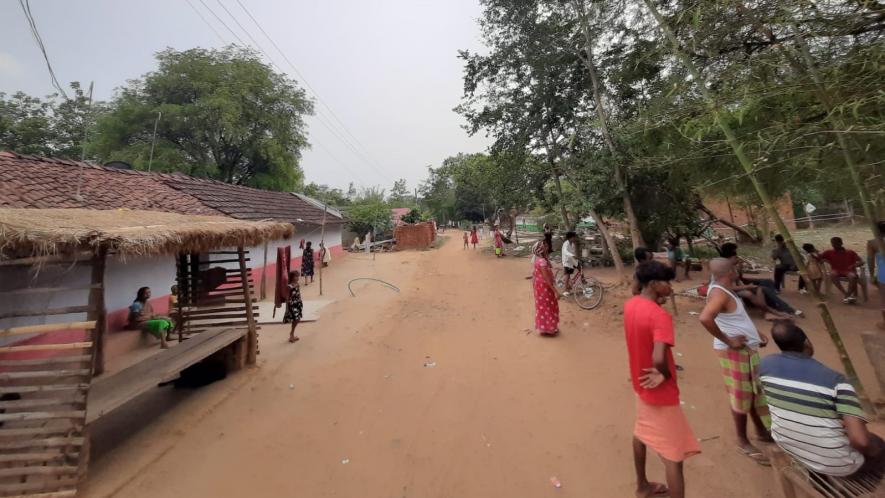
Samu Tola, the tola within Kherbani, is the area that will be the most affected if the plant were to be installed as they are hardly 300m away from the plant area. | All images by Hrishi Raj Anand
Jamshedpur: After crossing a series of kutcha roads and two railway crossings, one would have to take an almost invisible steep left turn that would, in turn, lead to a long muddy path. This muddy path is followed by a small jungle, with greenery on either side and finally, after a 20 km drive from the main city of Jamshedpur, comes the village that has been seeing the headlines lately, Kherbani.
A culmination of several tolas (smaller villages) and dominated by the Ho Tribe, Kherbani is a village that, to date, does not have pucca roads, and the construction of the age-old promise of building roads has just begun. With only a handful of street lights, the place grows dim during dusk and slowly turns into darkness as the night proceeds.
Samu Tola in Kherbani has the least number of pucca houses. In the centre of the village lies a small primary school, and beyond that is where meetings are held under the shade of a tree.
Diku Mel Gandi (35) sits on a charpoy waiting for the reporter to settle while the other important village members also take their place.
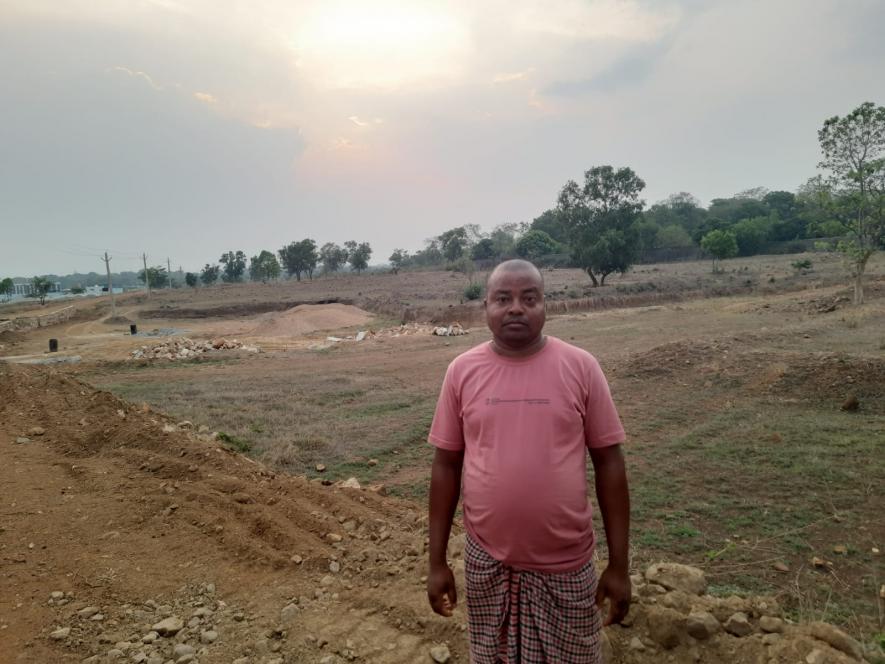
Diku Mel Gandi, the Hatu Munda of Kherbani, shows what importance the land behind him held for the villagers.
Diku Mel Gandi, from the very start, seems like an important person. When the reporter tries to address the people and enquire them about the making of the solid waste treatment plant, Diku Mel Gandi is the only one to respond to questions, as if he were the head. But later in his introduction, he mentioned something that made the position he held more clear.
The story of Kherbani is not new. It started in 2010, when Arjun Munda, currently a Union Minister from BJP (Bharatiya Janata Party), was the Chief Minister of Jharkhand. This was the first attempt to use the land of Kherbani to make a Solid Waste Treatment plant for non-biodegradable waste. The villagers opposed this with slogans that dictated, “Waste of the urban shall stay in the urban, waste of the village shall stay in the village” and other slogans against the ruling party and the private companies that the villagers held responsible for the attempt to grab their land and use it to build a waste treatment plant.
Another attempt was made in the later years, but the result was the same. Hence, the project shifted to a different area. Potka was the new village where Gram Sabha meetings were held, and the authorities tried convincing the villagers that the waste to be deposited would not cause any harm to them. However, it was rejected by the Gram Sabha, and the project was further delayed.
The State’s Urban Development department had made the Adityapur Municipal Corporation(AMC) the nodal agency for the project, while the others involved were Jamshedpur Notified Area Committee(JNAC), Mango Notified Area Committee(MNAC), Jugsalai Municipal Council(JMC), Adityapur Municipal Corporation and the Kapali Nagar Panchayat.
Diku Mel Gandi is the ‘Hatu Munda’ of his village, as he mentioned in his introduction to the reporter. A term unfamiliar to the mainstream dates back to the British era. It all traces back to 1837, a law set by the then British Commandant of Ramgarh Battalion T. Wilkinson called the Wilkinson’s rule. This rule has existed since then and has not been scrapped or amended.
Under this, the Ho people have Mankis and Mundas. Mankis is head of pirs (group of villages) and Mundas (head of particular villages). All matters related to land settlements, revenue collection, and criminal cases are dealt with by these Mundas and Mankis.
The villagers believe that this rule is being overlooked by the govt when it comes to instilling this solid waste treatment plant in the area.
“How could they even enter the village without my permission? As per Wilkinson’s rule, they cannot create any such project unless they have the permission of the Mankis and the Mundas,” narrated Diku Mel Gandi. As more people from the village gathered to listen and contribute to the matter that could affect all their lives, he delved into the legality of what rules were being ignored besides Wilkinsons.
In the PESA (Provisions of Panchayats(Extension to Scheduled Areas) Act 1996, Section 4(i) talks about the rights of Gram Sabha when it comes to land acquisition or development work in the village area of any sort. This section gives Gram Sabha powers to reject any such project and dictates that Gram Sabha shall be consulted first for any such acquisition.
“We were pushed and harassed by the police; consultation is far-fetched,” said Sunil*, another villager.
The most recent attempt to start the mapping for the project to set up a solid waste management plant in Kherbani was on Monday, June 5, 2023. In the videos circulated in Whatsapp groups, it could be seen that women of these villages were the most active in stopping the officials from stepping forward towards the project that would allegedly ruin their lives.
Devi Mel Gandi (25) is one of the youngest ward members in the village Panchayat. She was one of the first people to know that the SDM and other officials were coming again to plot out the land.
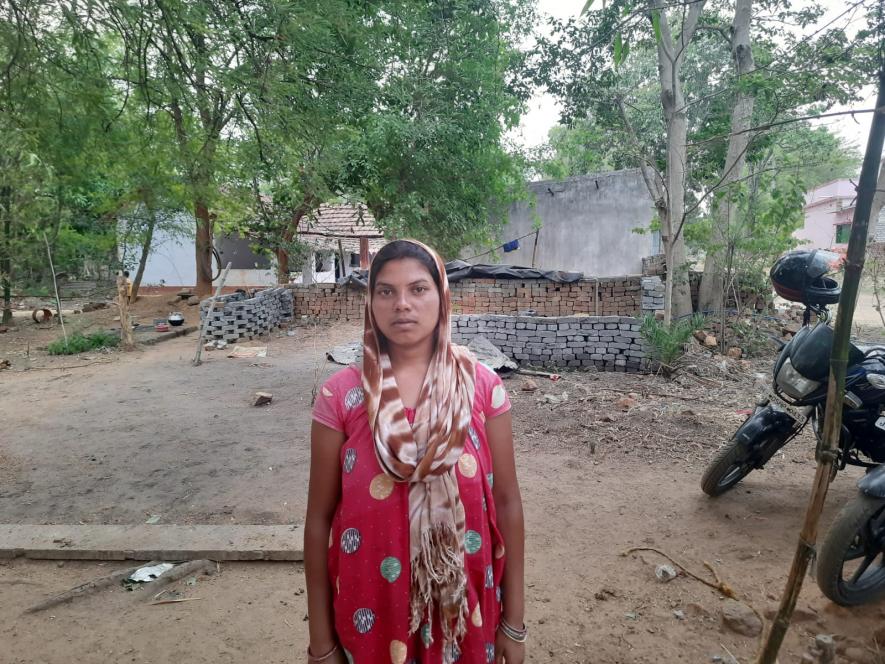
Devi Mel Gandi, the young ward member, was among the first to know about the govt officials coming and mobilized the villagers to protest.
“It was around 10 am; we were all done with our breakfast when two of the village boys informed us that a few officials with police were coming to our village area. I brought everyone together to the area, and we did not allow them to proceed with the mapping.”
Devi Mel Gandi says that not the whole of Kherbani could come, but all the villagers of Samu Tola were present to revolt.
“The SDM and BDO were there along with other officials. They did not even want to listen to our side. They straight up asked us what problem we had with the waste treatment plant,” she said. The villagers tried telling them that the land to be used was very close to the habitation. The air, water, and land would be contaminated.
The waste plant area is right opposite the only school for the village kids. SD Public School, a CBSE Board school with a lower fee than others, is the only school that teaches up to 10th grade in the area. The school would have to go if the plant was made, and the children would stare at a bleak future. The nearest school apart from this is only after two railway crossings and a minimum of 10 km away in an area called Govindpur.
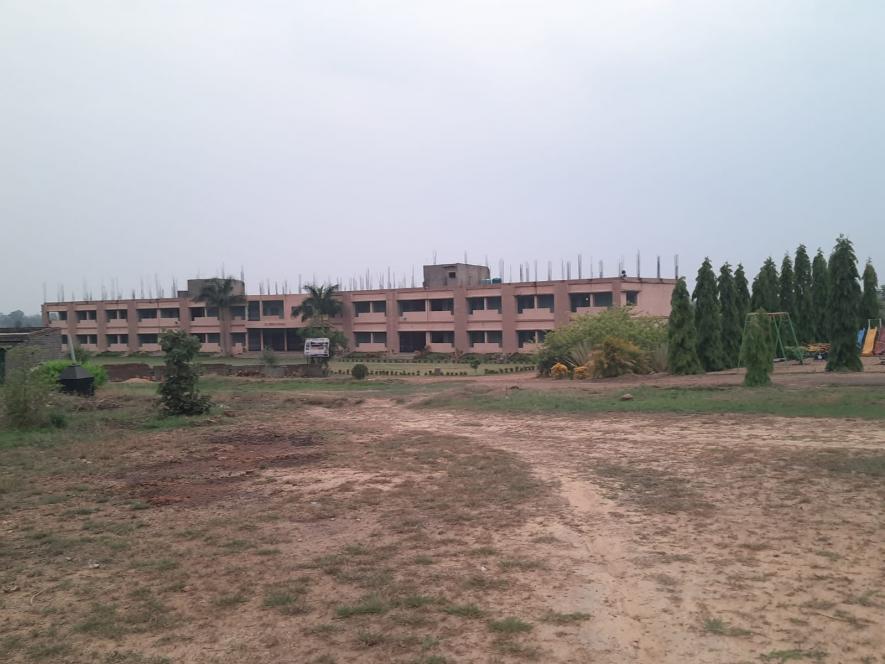
S D Public School, the only school that teaches up to 10th grade in the area. It resides right opposite the place where the plant is supposed to be set up.
Not just for the students, if one were to look at the land, right opposite was the school, and adjacent to the school was a factory that did wiring work, employing around 250 people from Kherbani. The factory would also be disrupted in the 30 acres of land that would be acquired for the urban waste.
Sanjay Mel Gandi is a worker in this factory. His father also works as a daily wage labourer in Govindpur.
Sanjay Mel Gandi says,” If this factory went, my family would not survive. Even now, our condition is not good when my father and I earn. Imagine one of us losing our job.” His fear is not his alone since most villagers have little land they use for farming once a year for ‘Dhaan’.
But this land the villagers used for farming was in the centre of what would be acquired. So the question of surviving without the factory was an extension of the fact that the villagers would lose their only fertile farming land.

The wiring factory is a major employment source for the Kherbani villagers. With the waste plant in place, the factory will have to go, leaving many unemployed.
A huge dry land parcel can be seen, as Diku Mel Gandi points out and explains each area. In this acquisition, if the government were successful, the villagers would lose not only their source of living but the only burial ground for the village and the worship spot for the tribals.
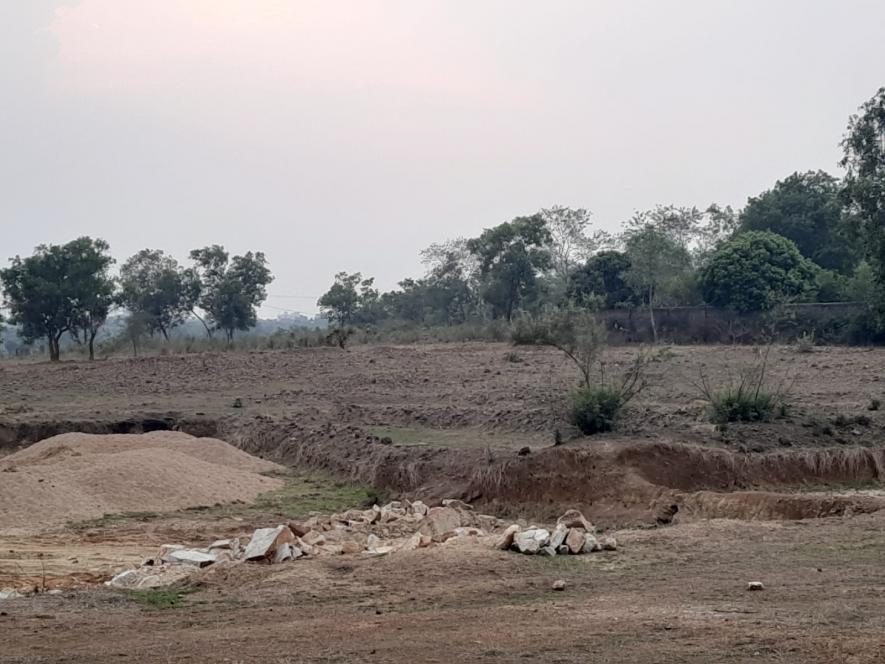
Right behind the sand pile is the lone burial ground of the village.
The fear of the acquisition comes from a question of survival for the villagers. Diku Mel Gandi says the villagers would lose everything if this project succeeds. And the fact that they had seen how plants had functioned in Jharkhand.
For example, Diku Mel Gandi said, “We saw what happened with Rahargora Cement plants. The villagers were assured that things would go well for them. Not only did my relatives lose employment, but their ancestral land was completely fertile before the plant was set up. The water became toxic and milky. The groundwater level also started going down, and today, all they have is the wages that these companies offer them for a lot of labour that they do. We do not want to live in the same manner.”
After a third failed attempt, the officials returned without any mapping. But the tribals of Jharkhand still survive in pale amplification of their issues that do not cross the urban mindsets of the steel city.
Get the latest reports & analysis with people's perspective on Protests, movements & deep analytical videos, discussions of the current affairs in your Telegram app. Subscribe to NewsClick's Telegram channel & get Real-Time updates on stories, as they get published on our website.























